The Confluence

Spring 2023




As I write this, it is raining. The soothing sound of rain on a tin roof is a favorite of mine, the rhythmic droplets cascading down the ridges onto the soft snow still lingering on the ground below. And below that, the earth is awakening. For weeks now, the light has been in the sky a little longer; birds are returning to the tree branches and morning skies; and buds on trees are fattening, as are the bellies of pregnant whitetail deer, picking their way across the horse pasture. This is by far my favorite time of year; I find excitement in the fresh energy, giving birth to new ideas and possibilities for the future.
In this issue of The Confluence, we celebrate spring by taking a look back at all we’ve accomplished in the past year. We’re proud of the year we had. It was one full of more: more classes, more conservation, restoration, and stewardship, and more partnerships than ever before.
In 2022 we consistently worked within our mission to inspire conservation and expand stewardship in the Swan Valley. We often say that we are at the confluence of conservation and education, and that we are aptly named, because everything we do is a combination of the two. Our overarching goal for the organization was that SVC is seen as a source of inspiration and information by the public, other nonprofits, state and federal agencies, our local community, and our board and staff members. To achieve this goal we worked on our top four priority areas:
Conservation (natural resource assets), where our goal is to conserve the Swan Valley watershed through public and private stewardship, restoration, and research and monitoring. Education (human assets), where we provided expanded opportunities for learning and worked to inform and inspire people of all ages and backgrounds to be good stewards.
Connection (capacity assets), where we worked to mutually increase our capacity at SVC, as well as our partners’ capacities. We did this through trusted relationships, where we were both bringing something needed to the table, as none of us can do this work alone.

Organizational Excellence (organizational assets), where we worked to maintain a high caliber nonprofit organization with a strong, engaged board; passionate, competent, happy staff; and a team of engaged volunteers. We also strived to build efficient, transparent practices and worked hard to expand our reach and gain investors.
Within our conservation goals: We completed the full survey of the Southwest Crown of the Continent for rare carnivore species of Canada lynx and wolverine (and fisher, though none were found). This project provides valuable information to land and wildlife managers across three national forests (Flathead, Lolo, and Helena Lewis & Clark). We installed or distributed a record number of electric fences, bear-resistant garbage cans, and beetle repellent packets. With all of these programs, we expanded our service area to focus on the north end of the watershed. We received an award from Missoula County for our management partnership with the CSKT on the 640-acre Elk Creek Conservation Area. We assisted in the maintenance of hundreds of miles of trails in the Mission Mountains Wilderness and Swan Front. And finally, under Luke Lamar’s leadership, we completed the largest wetland restoration project in the state of Montana. In partnership with the U.S. Fish & Wildlife Service, we restored 600 acres of native habitat at the Swan River National Wildlife Refuge.
Within our education goals: We reimagined our college programs, and added more opportunities for free landowner workshops on our Swan Legacy Forest property. We hosted a Gonzaga University field course for the first time, the Montana State University Master Gardener program, 12 online presentations, our annual SVBR Bear Fair in Ferndale, and an unprecedented number of wildlife tracks and sign classes, CyberTracker certifications, and Master Naturalist classes. We also gained University of Montana wildlife biology credits for our weeklong wildlife tracks and sign course, and in that class, we were able to provide scholarships to two indigenous students for the first time.
Swan Valley Connections
6887 MT Highway 83
Condon, MT 59826
p: (406) 754-3137
f: (406) 754-2965
info@svconnections.org
Board of Directors
Mary Shaw, Chair
Jessy Stevenson, Vice-Chair
Donn Lassila, Treasurer
Kathy DeMaster
Steve Kloetzel
Casey Ryan
Dan Stone
Greg Tollefson
Christian Wohlfeil
Tina Zenzola
Emeritus
Russ Abolt
Anne Dahl
Steve Ellis
Neil Meyer
Advisors
Kvande Anderson
Steve Bell
Jim Burchfield
Larry Garlick
Chris La Tray
Tim Love
Alex Metcalf
Pat O’Herren
Mark Schiltz
Mark Vander Meer
Gary Wolfe
Staff
Rebecca Ramsey, Executive Director
Andrea DiNino
Eli Estey
Leanna Grubaugh
Luke Lamar
Sara Lamar
Mike Mayernik
Uwe Schaefer
The Confluence is published by Swan Valley Connections, a non-profit organization situated in Montana’s scenic Swan Valley. Our mission is to inspire conservation and expand stewardship in the Swan Valley. Images by Swan Valley Connections’ staff, students, or volunteers, unless otherwise noted. All rights reserved to Swan Valley Connections. Change service requested.
SwanValleyConnections.org
Within our connection goals: We developed new relationships with organizations such as Empower Montana, who led our first internal workshop on equity, diversity, and inclusion. We sat on the planning team for the Western Collaborative Conservation Network conference, and we also sat on numerous panels at conferences throughout the year, promoting the value of collaboration and partnerships in tandem with screenings of the Seeley-Swan episode of the Life in the Land series (https://www. lifeintheland.org/seeley-swan-region). We deepened our relationships with our Blackfeet and Confederated Salish and Kootenai (CSKT) neighbors. We were on the steering committee and were leaders for the second year of the Mission Mountains Youth Crew (MMYC) program – a partnership with the CSKT, Salish Kootenai College, Flathead National Forest, and National Forest Foundation. We also developed a new funding partnership with The Wilderness Society to work with our indigenous partners on the MMYC program and other diverse partnership development.
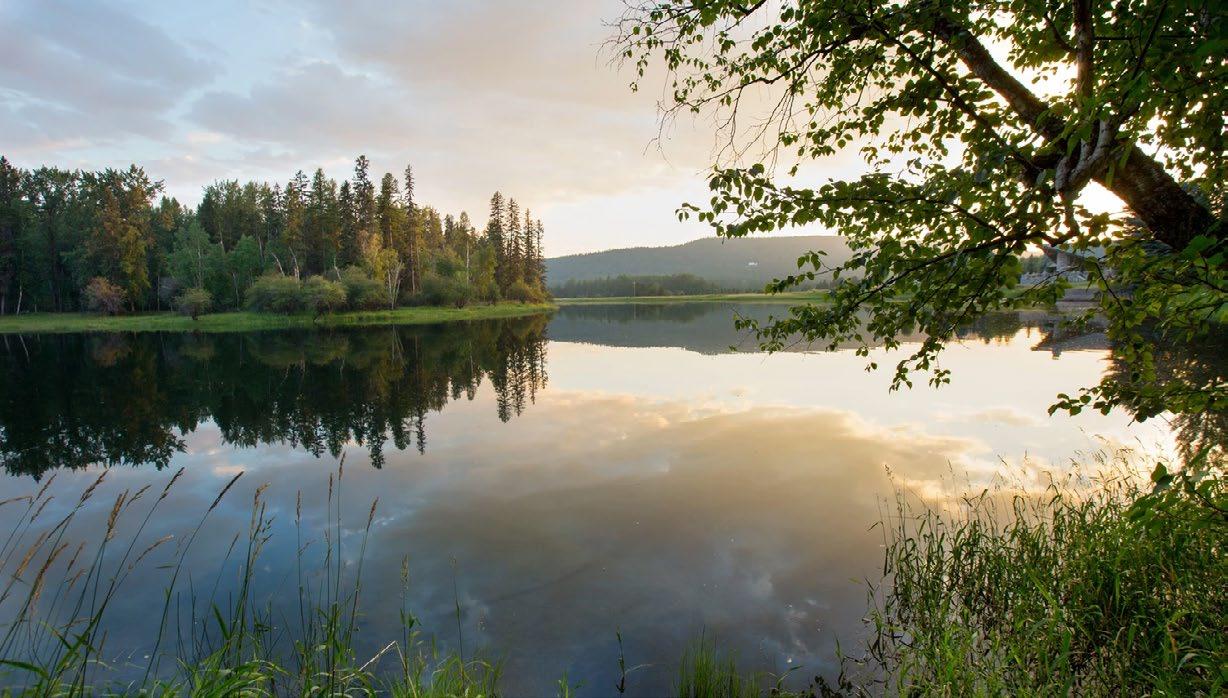
Within our organizational excellence goals: We retained and added to our talented team of employees and board members. We accelerated and reimagined our budgeting process. We increased revenues and investors, and ended the year in the black. Staff and board members attended trainings to increase leadership, practical naturalist, and advanced tracking skills. We increased our outreach in numerous ways and hosted the most successful Summer Soirée in the Swan annual fundraiser we’ve ever had, which included raising over $20k in scholarship funds for our educational programs. Finally, through the generosity of long-time local supporters Dan and Sue Stone, we had an endowment started for SVC at the Montana Community Foundation. (Read more about this and how you can plan a legacy gift on page 13.)
In 2023, we intend to continue putting your investments to work by solidifying our four pillars and increasing our capacity to serve you, our natural world, and the generations of conservationists yet to come. We strive to be welcoming to all people, and we hope that anyone who has an SVC encounter leaves with a feeling of being connected and inspired - to learn more, do more, and be more in, and for, nature. May your spring be full of rain showers that lull you into a restful slumber, nourish your seeds of new ideas, and bring your projects into full bloom. Together, the possibilities are endless.

Photo opposite page: Rebecca and Mary Rutherford, Executive Director of the Montana Community Foundation, outside of the Swan Valley Community Hall.

summary balance sheet as of december 31, 2022
Swan Valley Connections’ executive committee oversees the fiscal management of assets, balancing longterm financial stability with current operational needs. The executive committee provides oversight for investment (through a professional investment manager) of fiscal assets to provide longterm growth, as well as current income within a balanced and appropriately conservative investment portfolio.
In addition, the executive committee recommends for approval, by the entire board of directors, an annual operating budget and the strategic allocation of unrestricted and board designated net assets to support the continuing mission of Swan Valley Connections.
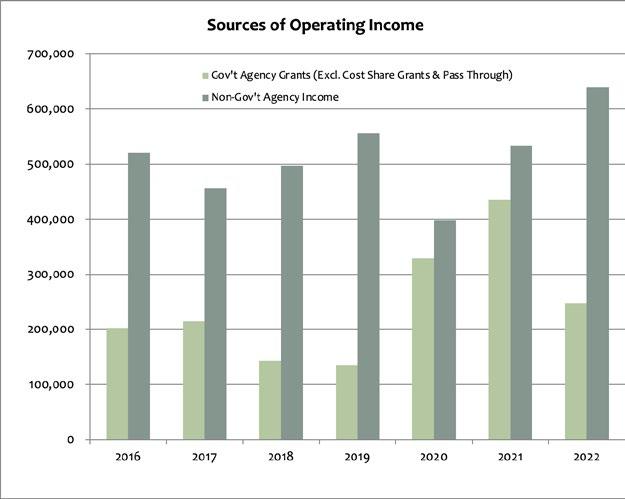
2022 landowners served and projects completed with svc
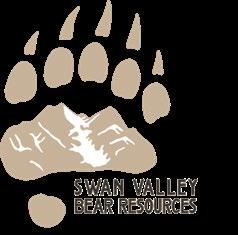
FUELS REDUCTION
10 projects
146 acres
59 containers
8 electric fences
wetland/stream restoration
2 projects
639 acres
Beetle Repellent

166 landowners
9730 packets
70 acres
Land stewardship
62 landowners
2491 acres total
307 landowners + projects


3346 acres managed


weeklong wildlife tracks & sign class
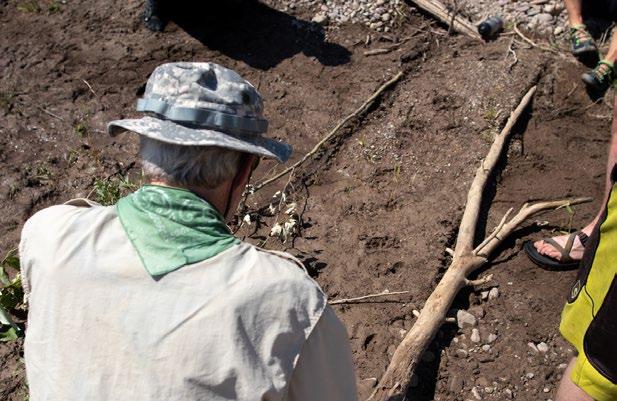

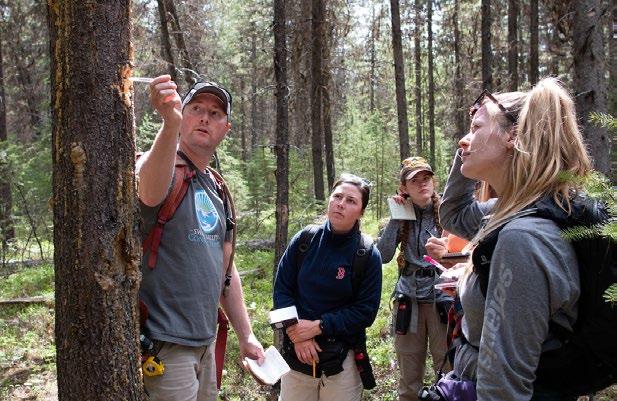


fox track from wildlife tracks & sign
wildlife in the west

mission mountains youth crew snorkel survey
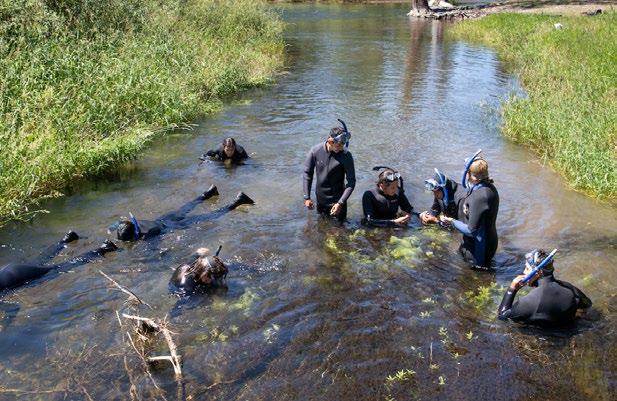
wildlife in the west rocky mountain front trip
summer weeklong wildlife tracks & sign
subalpine wildlife tracks & sign
swan river wildlife tracks & sign

elk creek conservation area blowdown salvage day
elk creek conservation area weed pull (volunteer day)
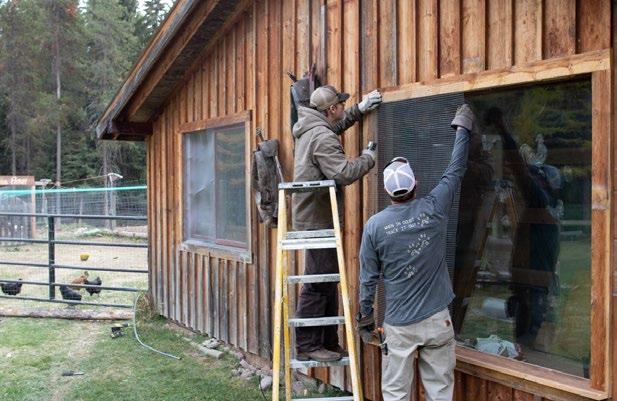

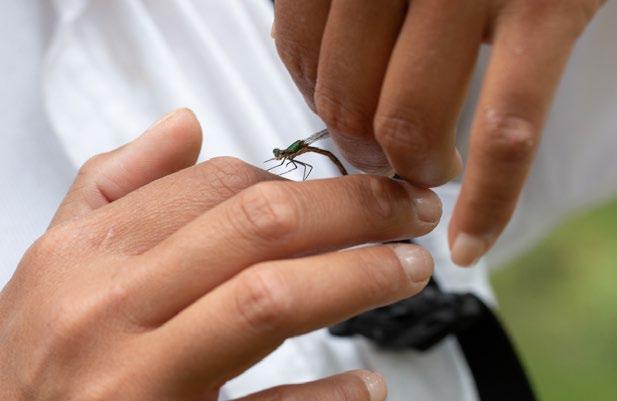
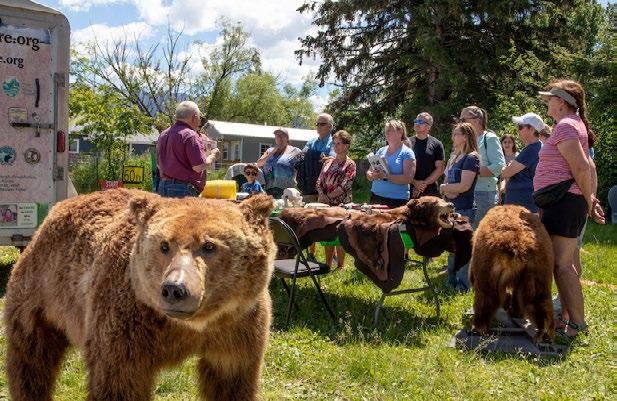
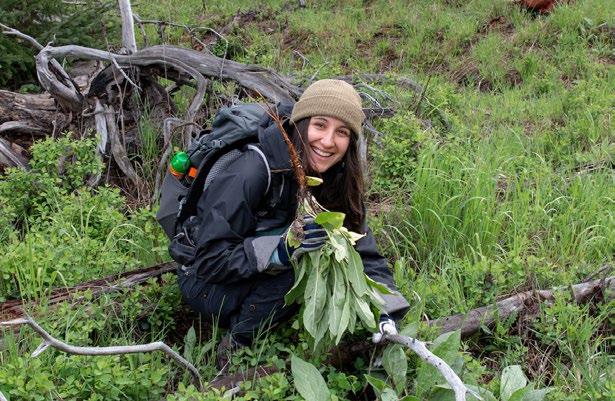
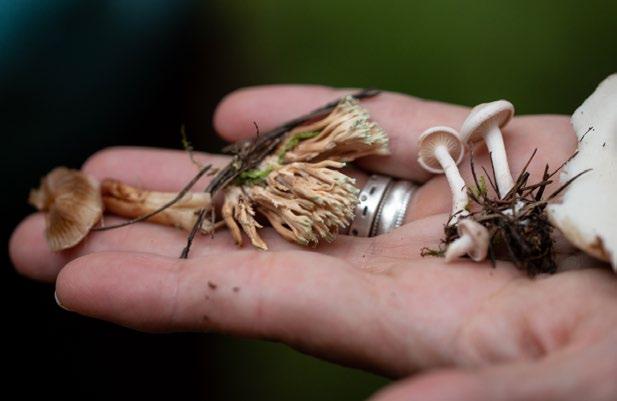

 tree planting workshop on swan legacy forest
swan river national wildlife refuge wetland restoration public tour
montana master naturalist bio blitz
svbr annual bear fair (bigfork)
weekend warrior master naturalist mycology day
swan valley bear resources electric fence build
tree planting workshop on swan legacy forest
swan river national wildlife refuge wetland restoration public tour
montana master naturalist bio blitz
svbr annual bear fair (bigfork)
weekend warrior master naturalist mycology day
swan valley bear resources electric fence build
On May 3, 2022, the US Forest Service (USFS) Swan Ranger District completed a 100-acre prescribed fire in the Barber Creek area with a slight twist to it. Not only was it one of several successful USFS burns for the 2022 spring burning season in the Swan Valley, but this burn also encompassed 10 acres of private land. This was a rare cross-boundary prescribed fire, with the USFS and a private landowner working together. Like the saying goes, “Fire, insects, and disease don’t stop at fence lines; neither should our management” (Montana Forest Action Plan). It was even more exciting since this was the first prescribed burn on private lands that SVC has been a partner, both providing technical assistance, connecting the USFS and the landowner, and helping light and control the fire during implementation.
Planning for this burn started a year prior. I was at a site visit with the landowner of the Swan Valley property, discussing fire risk reduction ideas. They expressed interest in prescribed fire, or light controlled burning, as an option for reducing the amount of ponderosa pine needle litter and accumulation of dead vegetation on the forest floor. I mentioned that the corner of the discussed property was adjacent to the USFS Swan Valley Bottom Maintenance Burning Project, and that maybe there was a possibility of burning at the same time as the USFS. I organized two site visits with the USFS Fire Management Officer-Fuels. From there, the USFS and private landowner worked together and created a “Memorandum of Understanding” (MOU), utilizing the Wyden Authority. The Wyden Authority allows the USFS to work with or on private lands on projects that protect, enhance, or restore resources within a watershed, and provide tangible benefits to achieving Forest Service goals and objectives.
Basically, by working together on USFS and private lands there are long term benefits to the public. In this case,
since the USFS was already planning prescribed fire adjacent to the property and neighborhood community, it made sense to increase the burn area onto the private land, which would improve the safety and effectiveness of firefighters when a wildfire happens in the area. Expanding the burn onto the private land also allowed for more length of road to be used as a boundary of the prescribed burn, instead of stopping the burn at the fence line. The landowner contributed to the burn by using a tractor and brush mower ahead of time to prepare part of a fireline, had availability of water sources for firefighters if needed during the burn, and also participated in the lighting and monitoring of the fire.
What is prescribed fire? “Prescribed fires, also known as prescribed burns or controlled burns, refer to the controlled application of fire by a team of fire experts under specified weather conditions to restore health to ecosystems that depend on fire.” (https://www.fs.usda.gov/managing-land/ prescribed-fire). Using fire in this way is an important and useful tool to reduce wildfire risk around communities. Prescribed fires here typically happen in the spring before summer green up, when plants are still brown and dormant after winter, or in the fall when conditions are right for low-intensity and behavior burning. Not all prescribed fire is the same either. Lower elevation ponderosa pine forests are adapted for light, regular prescribed burning every 10-20 years that leave the thick parked ponderosa pine with scorched bark but little damage to the tree otherwise, while higher elevation subalpine fir and spruce forests are adapted for patchy, more intense burning every 50100 years.
Prescribed fire is just one tool in the toolbox for creating Fire-Adapted Communities here in Montana. There are many things that are or can be done to prepare our communities before a wildfire happens, wildfire response during a wildfire
May, 3 2022: During the prescribed fire. Light burning from prescribed fires removes dead grass, accumulated pine needles, pine cones, bark, and dead branches that build up over time and become a fire hazard to communities and forests. The fire is short in duration and low in intensity.

event, and recovery after the fire is gone. Proactive and preventative measures such as thinning trees, pruning branches, raking, removing needles from gutters, and mowing around your home and structures are a few other ways to improve the likelihood of your home surviving a wildfire. For wildfire response, the Swan Valley has an effective team of USFS, DNRC, and volunteer fire departments ready to go during the summer fire season. But in order to remain proactive instead of reactive, the USFS, DNRC, and many private landowners are also doing forest thinning and fire risk reduction projects to reduce wildfire risk. The combination of all these proactive fire preparedness activities (including prescribed fire) practices to name a few, are important factors of living in this fire-adapted Swan Valley.
The Valley Bottom Maintenance Burning Project is just what it sounds like– using fire as a tool to maintain a healthy, fire-resilient forest. It is a project to use low intensity prescribed fire to burn and remove the grass, brush, needles, and small trees in forest stands that had been thinned and pile burned or broadcast burned by previous USFS projects that occurred 10-20 years prior. This fits within the historical average of 1020 years during which much of the Swan Valley’s ponderosa forests would have naturally burned, under the pre-European lightning-caused and indigenous burning time scales.
During the May 3rd prescribed burn, some of the area had been burned 10 years prior, while some of it had only been thinned with burn piles. The difference between the way the fire behaved through places that were burned 10 years ago versus areas where this was the first entry of fire in approximately 100 years was very noticeable. The amount of energy and heat released, even just from piled up needles, branches, bark, and dead grass, in contrast to areas that had not been burned prior, was dramatically more intense compared to the previously burned areas. The areas that had previously seen fire carried fire very lightly and quickly through the top layer of grass and needles, with no concerns of it getting too intense. It makes sense– this is maintenance burning. Imagine: what is it like
when you mow your lawn once a week throughout the summer versus once per summer? It is much more manageable if you mow once a week, as opposed to once a year, which turns into a big project. It’s the same for maintenance burning, just a different time scale of burning roughly once every 10-20 years. Sadly, many of our forests across the west adapted for 10-20 year fire cycles have not had any fires for 100+ years now leaving them in danger of high-severity, high-impact fires. Proactive thinning and prescribed fires can help get these forests back to a more resilient state and ready for fire again.
Now, imagine if this area that was burned with prescribed fire on May 3, 2022 is impacted by an actual wildfire during the heat of the summer a year from now, 5 years from now, or 20 years from now. The area will probably still burn in the grass and the pine needles, but less likely in the crowns of the trees, and the energy and intensity will be much less than if the prescribed fire had never happened. This decrease in energy and intensity then gives our firefighters and first responders a higher likelihood to help protect our communities, our infrastructure, and those things that we value. But most importantly, it helps them to keep themselves safe in that firefighting effort. We owe it to them to do what we can proactively, in these firedependent forests, to give them a fighting chance. We owe it to the valley-bottom ecosystems to reintroduce fire (“good fire”) at the right time and scale, so that they can persist in a world where fire is not the enemy, but a natural part of the forest itself. Prescribed fire like this example is not practical everywhere, but there are many other ways to prepare and adapt to wildfire. If you’re interested in learning more about prescribed fire or cost-share funding for forest thinning, or if you have questions about how to prepare your house and forest for wildfire, don’t hesitate to contact us at SVC. We’ll happily answer your questions or send you to the agency or people who can help.
August, 3 2022: Three months after prescribed burn. Grasses, forbs, wildflowers, shrubs resprout after light burning removes old dead vegetation. Nutrients are recycled and available for plants and trees after burning and wildlife forage on fresh new growth. Trees such as ponderosa pine (pictured), western larch, and Douglas fir have thick bark and deep roots that protect them from light burning that scorches the bark. Heat from burning also scorches lower limbs and needles, essentially pruning the trees to be more protected when the next fire comes through. Burning every 10-20 years is the natural, healthy cycle for this ponderosa pine forest.
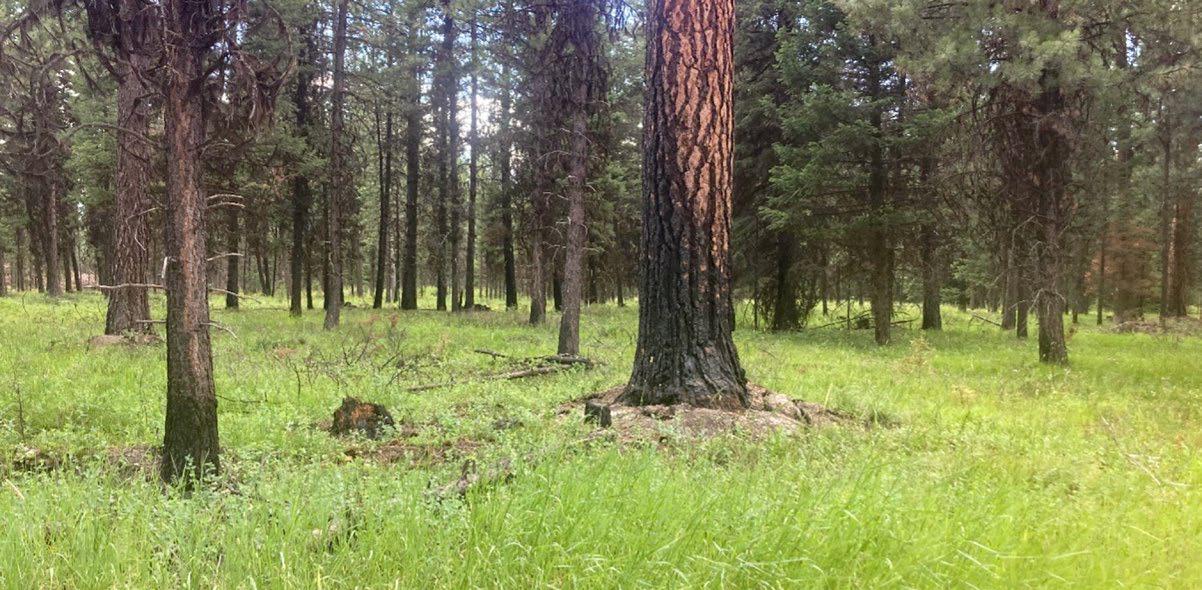
 By Clarissa Orton
By Clarissa Orton
I was introduced to the world of tracks and sign during Landscape and Livelihood, one of the college field semester programs offered by Swan Valley Connections. During our first week of class, we stepped out of our home for the next couple months, the historic Beck Homestead barn, and walked into the woods. Our walk was interrupted frequently, Luke and Sara Lamar (SVC’s Conservation and Education Directors, respectively) slowing and stopping with a line of students piling up behind them. We gathered around the first of many tracks we saw that day. Luke and Sara explained the who, what, and why of the track to the best of their ability. Their eyes noticed soil disturbances, scratches, and plants I didn’t even know to look for.
After many stops, we walked (I mostly slid) down a hill onto a creek bed. The lush grasses and towering trees shaded us from the midday sun, and the creek whispered as we gathered together. Luke and Sara asked us to independently go look, listen, and notice to the best of our ability. My knees were muddied from squatting to look at the ground as closely as possible by the time Sara and Luke called us back together. Luke pointed to a tree and the creek and asked, “What happened here?” I called out, “Some deer crossed the creek!”
Luke was quiet for a moment. He looked at the landscape in front of us, as if trying to see what I was seeing. He asked with a tone of curiosity,“Why do you think that?”
I didn’t have an answer; I hadn’t really thought about why, it was just a guess. Luke prompted us to, once again, really look and think about what we saw. That’s when something in my brain clicked. I noticed the marks on the tree next to Sara - chunks ripped off, slashes of missing bark, and some smooth patches. And the creek bed, which had been eroded in one spot, with grass and moss turned over along the rest of the bed, was now covered in wet soil. I still had no idea why it looked that
way, but I began to see the pieces of the puzzle. We learned that some bears had been entering the creek in that spot, their steps eroding the bank and muddying the water. They had also been rubbing against the tree, biting the tree, tearing into it with their claws, and rubbing the bark smooth.
Our walk back to the barn took a bit longer; I stopped every few steps, looking closely at the little red berries (kinnikinnick), noticing the fissures in Doug fir bark, recognizing the claw marks that registered on a canid print, and smelling the common yarrow. Back at the barn, Luke and Sara showed us trail camera footage from the creek bed. We watched the bears splash in the water and mark the tree. We learned that bears rub trees for more than scratching their backs; they leave their scent and marks on the trees to communicate with other bears and animals (us in this instance). That was about two years ago.
Now, I spend the majority of my days with Sara, Luke, and Mike Mayernik (SVC’s Conservation and Stewardship Associate), working and learning at SVC as the 2023 winter rare carnivore field technician. I have spent this winter snowmobiling on Forest Service and BLM roads, looking for carnivore tracksspecifically, Canada lynx and wolverine. I am still often asked “who” and “why,” but now with a much higher success rate with my answers. Often it’s a coyote running along the road or some elk postholing. And sometimes, we are fortunate enough to find a lynx - a round track that often looks splayed in the snow.
We follow many lynx tracks, snowshoeing into dense lodgepole regeneration (new trees becoming established after a wildfire), up and down and up again, on and off roads, under downed trees, across creeks, and into some of the most beautiful landscapes I have ever seen. We look for changes in the gait pattern, finding places the cats stopped to rest, chase a hare, or kill their next meal. As we track, we take vegetation
plots to better understand what kind of environments the lynx are interacting with, so we can help to foster action that will protect the lynx and the landscapes they prefer to call home. What I learned during Landscape and Livelihood, and what I am reminded of nearly every day, is how little we know and how much there is to learn. A couple of weeks ago, Mike stumped me. We had finished restocking our bait stations in the Garnet Mountain Range and were on our way back to the truck, when Mike pulled over to look closely at a track. We stood up to our knees in the snow, bent over some little skittering marks. It was a pattern I recognized, but the size had me confused. Mike asked, “What do you think?” As I told him what I saw, he nodded while looking at the tracks, seeing something similar. The little lines of three tracks led me to the weasel family, but I had no idea beyond that. So I stood there, listing all the weasels I could think of, while Mike raised his eyebrows and shook his head. Eventually, I got a very helpful hint: that this little animal is a stinky one. Surprisingly, a skunk is not in the weasel family, but is a Mephitidae. This family is identifiable by their anal scent glands, like the stink badger.

Tracks and sign is interpretation; it is filling in the blanks to the best of our ability, and sometimes that is not much. But, the more you know, the more you look, the more educated your guess, and the bigger the picture gets.
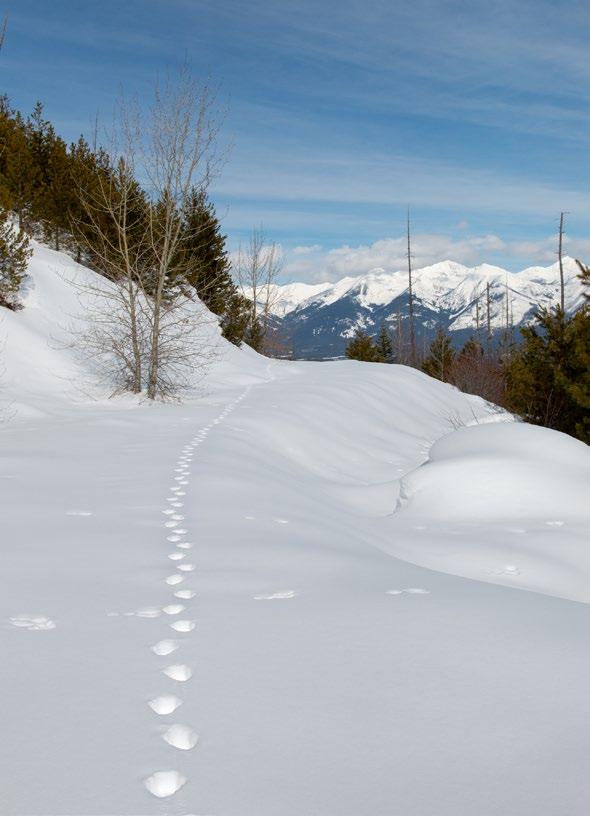

back?” were inumerable and showed just how much she means to this community.
Leanna retires on April 28, 2023, and she plans to spend lots of well-deserved time camping with her husband, Rip, their yellow labs, Ty and Sonny, and their horse and mules. She’s a wealth of knowledge, an unwavering source of warmth and support, and to say she’ll be missed is a gross understatement. We can’t thank her enough for all that she’s done for our organization (and parent organization), our community, and each of us as individuals!
*We’ll be hosting a retirement party for Leanna on April 28th at the Swan Valley Community Hall at 5:00PM Please join us in celebrating her!
Leanna was one of the first people I interacted with when I moved to the Swan Valley back in 2016. I became an avid hiker in my teens and spent much of my time in the hills of Connecticut, and later in those outside of San Diego. Having never lived with grizzlies in my backyard before, my imagination led me to believe they were waiting around every trail switchback, and I was less than eager to head out into the woods and mountains on my own.
My partner at the time and I saw what was listed as Swan Ecosystem Center on the map and decided to go in and check it out. At the gentle chime of the hanging doorbells, we were immediately greeted by a woman with a warm, smiling face - that, of course, was Leanna Grubaugh. Leanna took her time going over various types of maps with us, and upon learning that I was worried about hiking, she offered to walk outside with us and practice spraying an inert can of bear spray (i.e. one that’s not actually fillled with capsaicin).
Since that day, I’ve hiked countless miles on my own, from the Mission Mountains to the Bob Marshall Wilderness and beyond. I’ve also been lucky enough to work with Leanna for the past five years. She’s my right-hand woman in getting this publication out to all of you, which, due to the laws of technology, never seems to go smoothly. But Leanna tackles any obstacle that comes our way. She’s the glue that keeps our office together, which became painfully clear when she was out recovering from knee surgery, and we did our best at trying to keep this machine running without her. The amount of calls and walk-ins who said, “Is Leanna there?” or “When will Leanna be
We asked a number of locals, former co-workers, and friends if they had any words or stories they wanted to share about Leanna. We couldn’t fit them all here, but we wanted to share the common threads that ran throughout all of the write-ups; a number of words came up time and time again, which are illustrated in the word map below. We couldn’t agree with them more:

Leanna Grubaugh is not an ordinary person. She has the ability to greet visitors to the Swan Valley Connections office and make them feel that assisting them is fun. Want to learn about the Swan Valley? No problem. Care to see the Connections exhibits? “Let me show you,” she’ll say. Which is not to imply that Leanna is a “know it all,” but rather a “know a lot” in a friendly sort of way.
Most will agree that Leanna’s sunny, personable, takecharge attitude creates a positive experience for those entering the visitor’s center. Fortunately, these personality traits extend to the Swan Valley Connections staff and community at large. There are few jobs she won’t tackle. She will find educational gear and equipment in the storage area, relay messages, access information and pass it along…And if you happen to need someone to grind some venison for you, Leanna can assist!
Diann and I have known and worked with Leanna for years. Our jobs were made easier due to her skills, and we have always admired her passionate connection to the Swan Valley’s people and places. You cannot “retire” those kinds of memories.
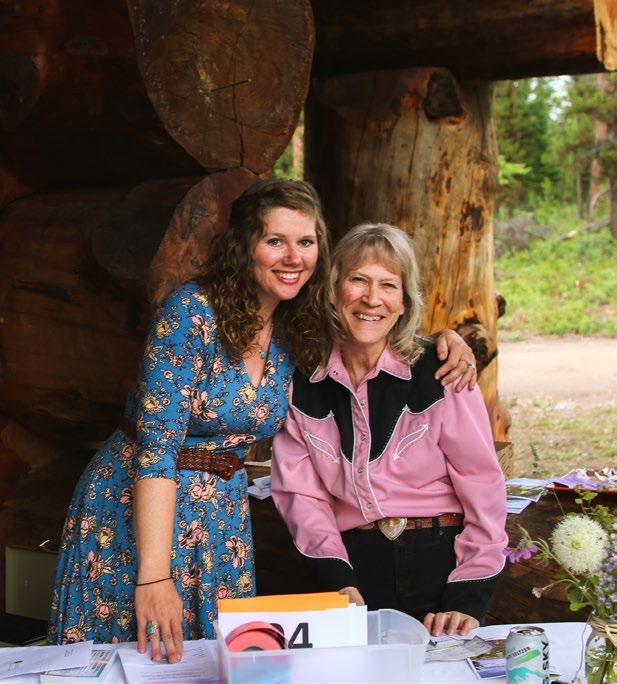
residents and longtime SVC supporters
-Mike Childs and Diann Ericson, Swan Valley
Over the last three years, we have all learned just how hard it is to predict the future. We also saw first-hand how important it is for us to have reliable sources of revenue to help fuel the mission of Swan Valley Connections. A combination of pressures created from and exacerbated by the pandemic has shown just how vital Swan Valley Connections’ work is to Montana.
To help ensure a strong future for the organization and the community, the Swan Valley Connections Endowment was established at the Montana Community Foundation (MCF) for the permanent support of inspiring conservation and expanding stewardship in the Swan Valley.
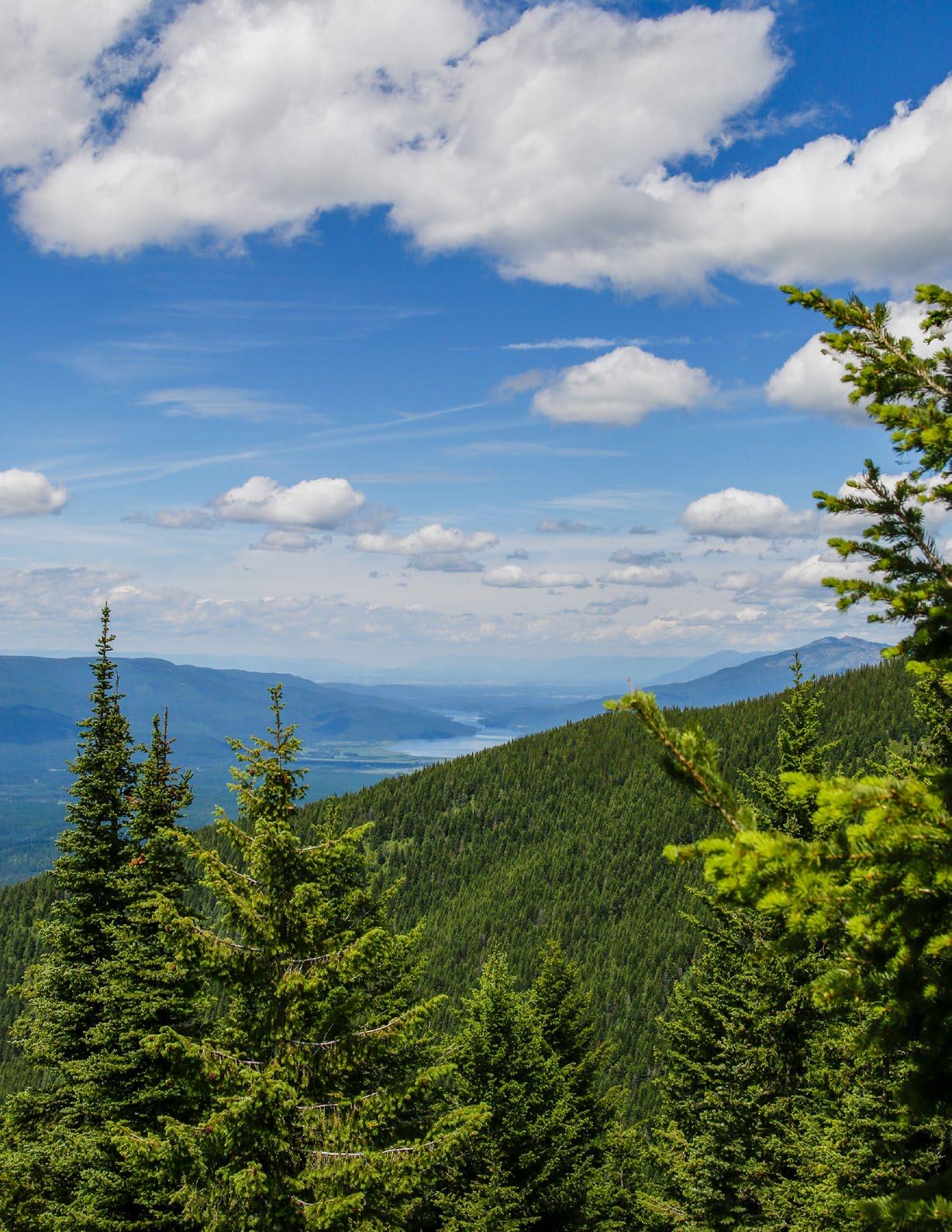
You can help ensure a strong future for Swan Valley.
With a contribution to the endowment, you can make a lasting impact while ensuring Swan Valley Connections can meet the needs of the Swan River watershed, now and forever. The word “endowment” means simply that your gift will be managed for the benefit of Swan Valley Connections forever. The earnings from the invested endowment funds will be contributed to Swan Valley Connections every year and then used to fulfill their mission.
Giving to the endowment can help you meet your financial and charitable goals while receiving some fantastic tax benefits. With a qualified contribution of $2,500 or more to the endowment, you can take advantage of the Montana Endowment Tax Credit (METC) – a direct credit toward your Montana state tax liability. Individuals can claim up to $10,000 in METC annually or $20,000 for couples filing jointly, and business donors are eligible for up to $10,000 as well. There are a variety of ways you can give to the endowment:
A gift of stock • A cash gift • A gift made in your will or trust • A gift that pays you income for life • A gift of life insurance
By establishing this endowment at MCF, Swan Valley Connections benefits from being part of a larger investment portfolio, which has historically provided a more consistent rate of return. Another great benefit of the endowment is having the assistance of MCF’s gift planning professionals to help build it. MCF provides fundraising expertise and handles all administrative details and investment responsibilities for the fund, freeing Swan Valley Connections staff to concentrate on their mission.
To learn more about how you can support Swan Valley Connections through their endowment fund at MCF and take advantage of the tax credit and other benefits, contact Rebecca Ramsey, Executive Director at Rebecca@svconnections. org. She will be happy to connect you with the experts at the Montana Community Foundation.
What is a tax credit?
IT IS AN ABOVE-THE-LINE TAX CREDIT ON YOUR MONTANA INCOME TAX.
40% PERCENTAGE OF INDIVIDUAL PLANNED GIFT VALUE ELIGIBLE FOR TAX CREDIT
PERCENTAGE OF BUSINESS DIRECT GIFT VALUE ELIGIBLE FOR TAX CREDIT 20%
MAXIMUM ALLOWABLE AMOUNT: $10,000 $20,000
Thank you to all of our 2022 Supporters!
Daniel Ackerstein · Barrett Adams · John Addis · Lori Aiello · Joe Aiello · Andy Aldeen · Tara Allen · American Endowment Foundation
David Amnotte · Maren Amnotte · Robert Amo · Doug Anderson · Kvande Anderson · Jane Andrews · Steve Andrews · Anomal Press
Mike Armstrong · Gordon Ash · James Ash · Anne Ashbaugh · Lucy Atkinson · Paul Ballinger · Susan Ballinger · Susan Barmeyer · Base Camp Bigfork · Anne Baugh · Eric Baugh · Emily Beck · George Beck · Keith Beck · Kelly Beevers · Mike Beevers · Tammy Beevers · Bob Behnke · Kris Behnke · Stephen Bell · Hubbard Benedict · Mark Benedict · Brad Bennett · Jennifer Bennett · Faith Bernstein · William Beyer · Dilip Bhadra · Lauren Bleck-Tutsch · Bob Bloyer · Sean Bogue · Wendy Boll · Jan Boyce · Laura Braafladt · Heidi Brabham · Susan Bracken · Nancy Braun · William Brenner · Amanda Brent · Mike Brent · Peggy Brewer · Chris Brick · Klara Briknarova · Jeffrey Brodie
Michelle Brodie · Andrew Brown · Charles Brown · James K. Brown · Susan K. Brown · Chris Bryant · Edward Brunsvold · Daniel Burden
Sheri Burden · Bob Burke · Devannie Burke · Barbara Burns · Craig Burns · Caroline Calhoun · Sarah Calhoun · Danny Callahan · Thomas Camp · Steven Card · Patricia Card · Chris Clark · Jerome Coffey · Conrad Colby · Greg Colby · Sharon Colby · CSKT Beaded Jewelry · Dan Colibri · Kathy Colibri · Mark Connell · Nancy Jo Connell · Ivan Cordray · Bill Cory · Rebecca Coursey · Jonathan Sky Cova · Laura Cova · Creating Wildly · Sue Cushman · Al Czarnowsky · Anne Dahl · Joan Davis · Duane Day · Doug De Master · Kathryn De Master · Cory
DeStein · Julie Devine · Andrea DiNino · Ashley DiNino · Concezio DiNino · Linda DiNino · Melissa DiNino · Dan Doak · Daniel Doctor
Katarina Doctor · Addison Doporto · Jill Doyle · Scott Doyle · Dale Dufour · Dalton DuLac · Linda DuLac · Judy Dundas · Donald Duprey
Sally Edwards · Mae Nan Ellingson · Betsey Ellis · Stephen Ellis · Daniel Ellison · Kim Ellison · Brenda Ethridge · Lee Ettinger · Chad Evans · Marianne Evenhuis · Pete Feigley · Rachel Feigley · Mary Fitzsimon · Tom Fitzsimon · Katie Flaster · Flathead Lake Resort · Cynthia
Ford · Susan Ford · Don Fornes · Lauren Fornes · Raymond Fox · Tanya Fyfe · Daniel Gallacher · Lawrence Garlick · Pamela Garlick
Frank Gebhardt · Margaret Gebhardt · Nicholas Gistaro · Gabrielle Gittens · Good Food Store · Julie Goodhart · Sharon Gressle · Grizzly
Claw · Grace Ridge Rolfing · Leanna Grubaugh · Janet Guffin · Joanne Guyer · Jon Haber · Dan Hall · Jack Hall · Mike Hall · Robin Hall
Allyson Halm · Pete Halm · Allen Hampton · Toni Hampton · Gwen Hanley · John Hanley · Debra Harr · Kirk Harr · Doug Harwood · Carol
Harwood · George Hashisaki · Teresa Hashisaki · Dave Hauri · Mary Hauri · Dottie Heath · Leo Heath · Charlotte Heldstab · Steve Heldstab
Beverly Hickey · Terence Hickey · David Holmes · Ginger Holmes · Chris Honzel · Vickie Honzel · Norma Horsman · Bill Horstkamp · Nicole
Horstkamp · S. Howell Studios · Ken Hunzicker · Craig Ittner · Pamela Iverson · Ron Iverson · Jan Jackson-Moore · Hannah Jaicks Fanning
Bill Jessup · Judy Jessup · Lisa Johnson · Matt Johnson · Patricia Johnson · Jill Jolly · Beth Junkermier · Bill Junkermier · Amy Kalfsbeek
Brennan Katchatag · Jeff Kemp · Maureen Kemp · Susan Kemper · Colleen Kesterson · Wes Kesterson · Linda King · Kathy ‘Littlebird’
Kinzfogl · Pete Klein · Steve Kloetzel · Kathy Koors · Julie Kotschevar · Norman Kretschmar · Andi Kucirek · David Kulzer · Patricia Kulzer
Claudia Kux · Marty Kux · Allison LaBossiere · Julia Lakes · Sharon Lamar · Steve Lamar · Jean Langlas · William Langlas · Donn Lassila
Land Lindbergh · Lindbergh Lake HOA · Janet Linderman · Lint Roller Productions · Shane Lisowski · David Litzau · Linda Litzau · Chiaveli
Locsin · Donald Lodmell · Joni Lodmell · Logjam Presents · Ben Long · Talya Lorenz · Tim Love · Donna Love · Charles Ludden · Linda
Machia · Andrea Mahn · Daniel Mahn · Ernest Mancini · Marilyn Mancini · Mannix Family Beef · Maria Mantas · Gerald Marks · Sharon
Marks · Anthony Martorana · Bev Mayernik · Joe Mayernik · Caitlin Mayernik · Michael Mayernik · Buck McDonald · Tamala McDonald
John McKay · John McMahon · Joan McMahon · Malcolm McMillen · Carol McQuade · Alex Metcalf · Libby Metcalf · Dixie Meyer · Neil
Meyer · Helene Michael · Tom Michael · Lori Micken · Jeff Micklitz · Mary Miester · Miir · Ann Miller · Bob Miller · Debra Miller · Hannah
Miller · John Miller · Emma Millspaugh · Mark Millspaugh · Don Moe · Zoe Mohesky · Dennis Monson · Nina Munson · Christopher Moore
Andrea Morgan · Mary Mulligan · Matthew Mulligan · John Neathawk · Thomas Nelson · Alan Newell · Sue Newell · Karen Nichols
Northland Studio · Roy O’Connor · Susan O’Connor · Sherry O’Hearn · Mark Ollenburger · Laura Orvidas · John O’Steen · Jane Ostovitz
Kathryn Owen · Joan Owens · Scott Owens · Judy Page · Stephen Page · Chris Palmer · Tom Parker · Bill Peabody · Patricia Peebles
Marsha Penner · Charles Perniciaro · Piehawk Outpost · Jean Pocha · Dick Porte · Neva Porte · Joe Potter · Gayle Prunhuber · Pyramid
Mountain Lumber · Barbara Raible · Joe Raible · David Raino-Ogden · Kristine Raino-Ogden · Rebecca Ramsey · Robert Rasmussen · RBM
Lumber · Natalie Redmond · Republic Services · William Rice · Bruce Richardson · Kathleen Richardson · Rachael Riopel · Ann Roberts
William Roberts · Patricia Robinson-Grant · Gerson Rodriguez · Marra-Lynn Rodriguez · Lary Rogers · Patty Rogers · Emily Rolston · Eric
Roth · Jane Roth · Alan Ruby · Ruby + Revolver · Bill Russo · Casey Ryan · Hannah Ryan · Sarah Angst Art · Mark Schiltz · Peggy Schlesinger
Carol Schmidt · David Schmidt · Edith Sellars · Laurie Shammel · Kristin Shanley · Scott Shanley · Sabrina Shattles · Mary Shaw · Dwayne
Sheffler · Steve Sheriff · ShowRoom Missoula · Grace Siloti · Kathy Sindelar · Norm Sindelar · Charlene Singley · Gary Singley · Patricia
Sinz · Dan Siudak · Kristi Siudak · Kevin Slade · Kim Slade · Mary Minor Smith · Jenny Smolen · James Snyder · Janis Sodt · Bruce Speicher
Jennita Speicher · Brian Spellman · Ariana Spencer · Betsy Spettigue · Christian Spilker · Kelli Spilker · Georgina Staggs · Walter Staggs
Stella P Holt Foundation · Robert Stephens · Jessy Stevenson · Lyndee Stevenson · Mike Stevenson · Tere Stoll · Caitlin Stone · Daniel
Stone · Sue Stone · Patricia Ann Stout · Jeffrey Stowell · Christine Straube · Jim Straube · Alyce Streich · Ellen Sullivan · Stephen Sullivan · Megan Tabor · Pat Tabor · Susan Taylor · Jordan Teachworth · Anne-Marie Thomas · Jane Thomas · William Thomas · Rich Thomason
Sally Thomason · Ben Thompson · Joy Thompson · Nancy Thompson · Gene Tingle · Toiffer Pet Outfitters · Greg Tollefson · Jenny
Tollefson · Mary Ann Tollefson · Val Tollefson · Lara Tomov · Chris Travis · Diane Travis · Hank Trotter · True North Massage · Ann Tucker
Bill Tucker · Johnny Tutsch, Jr. · Beth Vallieres Art · Eva Vaughn · Juanita Vero · Joel Vignere · Brandon Villigan · Vital Ground · Roger Wade · Doug Wadle · Kristin Wadle · Kenn Waggoner · Kiandra Waggoner · Michael Wallace · Liza Ward · Michael Ward · Stark Ward · Tim Warner · Katie Weaver · Wendy Weaver · Patti Weber · Bethany Weiler-Lisowski · Jamie Wenzel · Ronald Wenzel · West of Kerchief Co
Whitefish Credit Union · Aaron Whitten · Brett Wilkison · Susan Wilkison · Warren Wilkison · Karen Williams · Cricket Wingfield · Janet
Winnie · Jill Wiseman · Rich Wiseman · Jon Wittrich · Christian Wohlfeil · Gary Wolfe · Rita Wolfe · Jee Wong · Clare Wood · Dodie Wood Dale Woolhiser · Steve Wurz · Cathy Wyatt · Nancy Zellman · Tina Zenzola ·
Alpine Artisans · American Rivers · Be Bear Aware · Bear Aware Bigfork · Blackfoot Challenge · Big Blackfoot Chapter Trout Unlimited
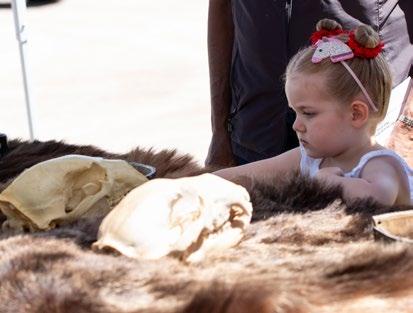
Bigfork Chamber of Commerce · Bob Marshall Wilderness Foundation · Cinnabar Foundation · Liz Claiborne Art Ortenberg Foundation

Clearwater Resource Council · Confederated Salish and Kootenai Tribes · Conserve Montana · Crown Managers Partnership · Crown of the Continent and Greater Yellowstone Initiative · Daughter of the Sun Backcountry Services · Defenders of Wildlife · Flathead Land Trust · Flathead National Forest · Friends of the Wild Swan · Evelyn H. Fuldner Foundation · Gallagher Fence · Hockaday Museum · Lake County Conservation District · Lolo National Forest · Charlotte Y. Martin Foundation · Montana Conservation Corps · Missoula County Conservation District Missoula County Weed District · Montana Department of Environmental Quality · Montana Department of Fish, Wildlife and Parks Montana Department of Natural Resources and Conservation · Montana Environmental Education Association
Montana Forest Collaboration Network · Montana Land Reliance · Montana Livestock Loss Board · Montana Natural History Center

Montana Watershed Coordination Council · Wild Montana · Montana Wild Wings Recovery Center · National Forest Foundation · The Nature Conservancy People and Carnivores · Pyramid Mountain Lumber Inc · Republic Services · River Design Group · Roundtable on the Crown of the Continent · Salish Kootenai College · Seeley Lake Chamber of Commerce · Seeley Lake Elementary School · Southwest
Crown of the Continent Collaborative · Stories for Action · Swan Lake Chamber Swan Lakers · Swan View Coalition · Swan Valley Community Council Swan Valley Regional Planning Committee · Swan Valley School · University of Montana College of Forestry and Conservation · University of Montana Bird Ecology Lab · U.S. Fish and Wildlife Service · Upper Swan Valley Historical Society · Vital Ground Foundation · Watershed Education Network · The Wilderness Society
In Memoriam:
Russ Abolt · Kvande Anderson · Joe Barrett · Chad Bauer · Anne Baugh · Eric Baugh · Eve Beebe · Matt Bell · Mark Benedict · Claudia
Bergman · Sandra Bergman · Gina Bilyeu · Tim Bilyeu · Marvin Boland · Bill Borchers · Karmen Borchers · Julie Bottum · Terri Bowdoin
Peggy Brewer · Susan Browne · Jim Burchfield · Bob Burke · Devannie Burke · Cason Carman · Janine Carter Schafer · Robin Chopus
Jodi Clark · Jessy Coltrane · Anne Dahl · Jeff Dalton · Gretchen Davidson · Levi Dawson · Michele DeMaris · Kathy De Master · Ann Marie
Deming · Cory DeStein · Andrea DiNino · Chris Dowling · Rebecca Drummond · Fred Duerr · Lynn Duerr · Andre DuLac · Judy Durant
Vicki Edwards · Steve Ellis · Eli Estey · Lee Ettinger · Mark Evanoff · Jody Fray · Gary Gagliardi · Ophelia Gagliardi · Porter Gagliardi · Dave
Garland · Larry Garlick · Randy Gazda · Nick Gistaro · Aaron Griffin · Addie Griffin · Jacob Griffin · Maggie Griffin · Makayla Griffin · Leanna
Grubaugh · John Hallman · Keith Hammer · Nancy Henckel · Erin Hickox · Megan Hopwood · Ellen Horowitz · Oliver Hubbard · Randy
Irvine · Jan Jackson-Moore · Saige Jibben · Lisa Johnson · Denny Kellogg · Kitty Kellogg · Rob Kenning · Saige Jibben · Steve Kloetzel
Frank Kolendich · Nathan Korb · Brittain Kovac · Andi Kucirek · Luke Lamar · Sara Lamar · Sharon Lamar · Steve Lamar · Dave Larson
Gayle Larson · LeaAnn Larson · Donn Lassila · Chris La Tray · Carol Lee · Sherman Lee · Mark Leffingwell · Patty Leonas · Jesse Liebrecht
Amy Lisk Thomas · David Littlefield · Chiaveli Locsin · Monty Love · Shayne Ludwick · Mike Madel · Maria Mantas · Katie Marsonette
Roger Marsonette · Whitney Mayer · Caitlin Mayernik · Michael Mayernik · Rick Mayfield · Dave McAdoo · Robin McAdoo · Rowan
McAdoo · Katie McCahan · Jackie McKennan · Beth Mendelsohn · Alex Metcalf · Neil Meyer · Helene Michael · Tom Michael · Hannah
Miller · Rob Millspaugh · Cecilia Mink · Chris Moore · Peggy Moore · Greg Neudecker · Alex Noble · Ryan Nyquist · Pat O’Herren · Owl
Research Institute · Danielle Oyler · Jackie Pagano · Tom Parker · Lauren Patten · Kaitlyn Perugini · Bruce Pollett · Tricia Pollett · Ann
Poteat · Barb Raible · Joe Raible · Rebecca Ramsey · Rob Rich · Rhett Richardson · Lindsey Robison · Lori Roberts · Kyle Runnels · Casey
Ryan · Hannah Sadowski · Jedd Sankar-Gordon · Uwe Schaefer · Curtis Scherfenberg · John Scherfenberg · Melissa Scherfenberg · Trent
Scherfenberg · Mark Schiltz · Josh Schukman · Ellen Seagraves · Mary Shaw · Kristin Shanley · Scott Shanley · Steven Simpson · Loretta
Skees · Kevin Slade · Kim Slade · Allie Smith · Kristina Smith · Silas Smith · Gordon Somerville · Kim Stay · Dani Steele · Gary Stein · Mary
Kay Stender · Sonja Stephan · Steve Stephan · Jessy Stevenson · Olivia Stewart · Dan Stone · Sue Stone · Christine Straube · Oakley
Strausser · Em Sumstine · Rob Thomas · Rich Thomason · Sally Thomason · Greg Tollefson · Lara Tomov · Sophie Trull · Ali Ulwelling
Thomas Urban · Valorie Urban · Mark Vander Meer · Joost Verboven · Collin Waldo · Ethan Waldo · Mark Waldo · Michelle Waldo · Scott Waldo · Roger Wade · Patti Weber · Tim Wheeler · Jack White · Addie Wichman · Chloe Wiersema · Christian Wohlfeil · Gary J. Wolfe Tina Zenzola · Maria Zepeda
6887 MT Hwy 83
Condon, MT 59826-9005
CHANGE SERVICE REQUESTED
Please check our website or call (406) 754-3137 for the most up-to-date information.
April 21
Pile Burning Workshop
Swan Legacy Forest or Elk Creek Conservation Area
April 22-May 14
Live Prescribed Burn with USFS Part of April’s Forestry & Fire Learning Series
April 28
Tree Planting Workshop
Swan Legacy Forest or Elk Creek Conservation Area

April 28
Leanna’s Retirement Party!
Swan Valley Community Hall
April 29
Wildlife Tracks & Sign Class With Empower MT
May 4-5
Missoula Gives Fundraiser
May 11
Adopt-a-Highway and Work Center Grounds Cleanup Volunteer Opportunity
May 13
Global Big Day Bird Count & In-person Tally
May 20-21
Montana Master Naturalist Weekend Warrior Session 2
May 26-28
Montana Master Naturalist Rendezvous Weekend For Certified Master Naturalists
May 27-July 6
Wildlife in the West College Field Program
June 2-30
Seeley Lake Community Foundation Change Your Pace Fundraising Challenge
June 3
Elk Creek Conservation Area Noxious Weed Pull Volunteer Opportunity
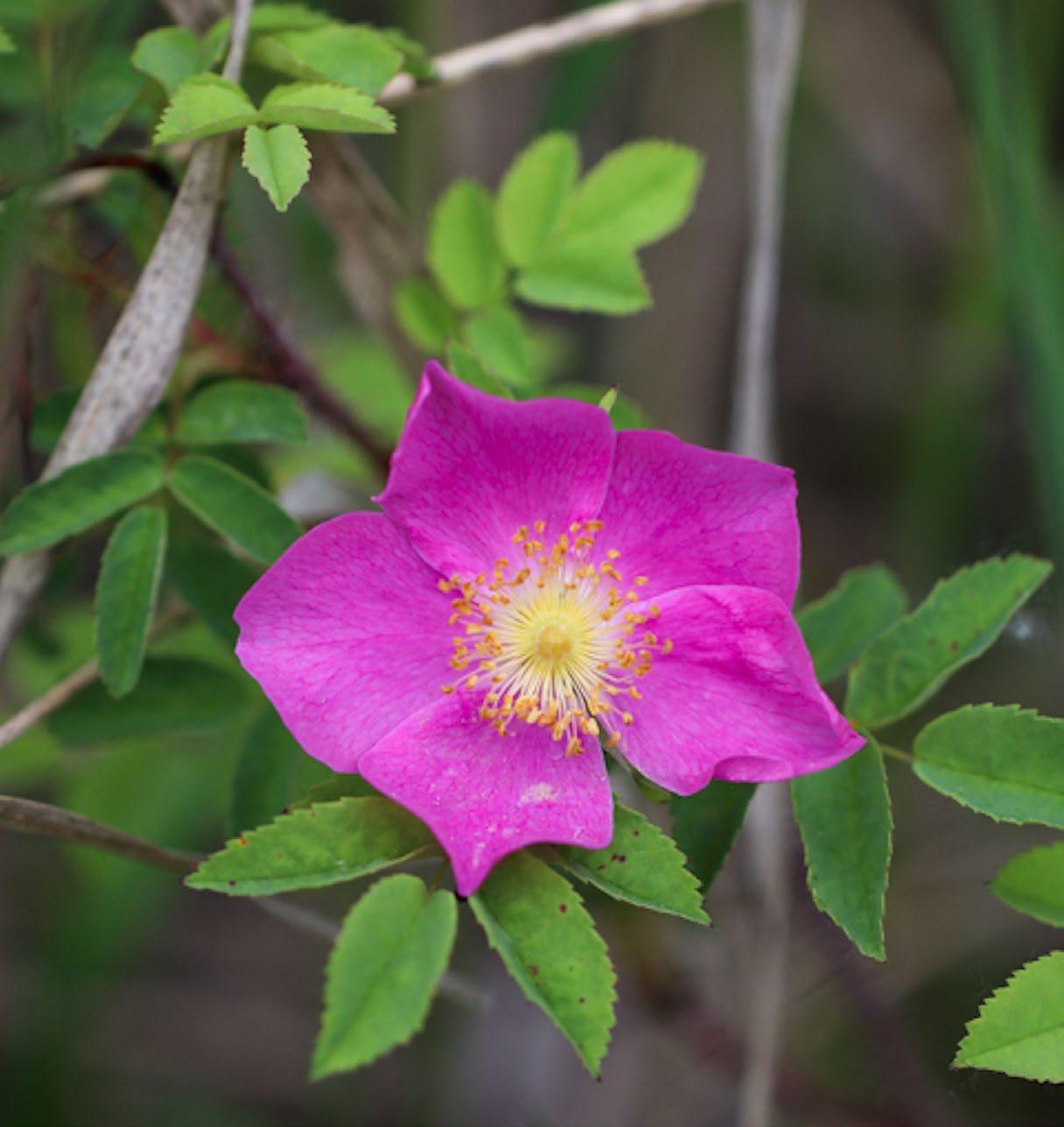
June 8-9
CyberTracker Specialist Certification (FULL) With David Moskowitz and Casey McFarland
June 10-11
CyberTracker Standard Certification (FULL) With David Moskowitz
June 20
SVBR Bear Awareness Event
Bigfork
June 16
Landowner Stewardship Fair
Swan Valley Community Hall/Swan Legacy Forest
July 9-14
Backcountry Master Naturalist